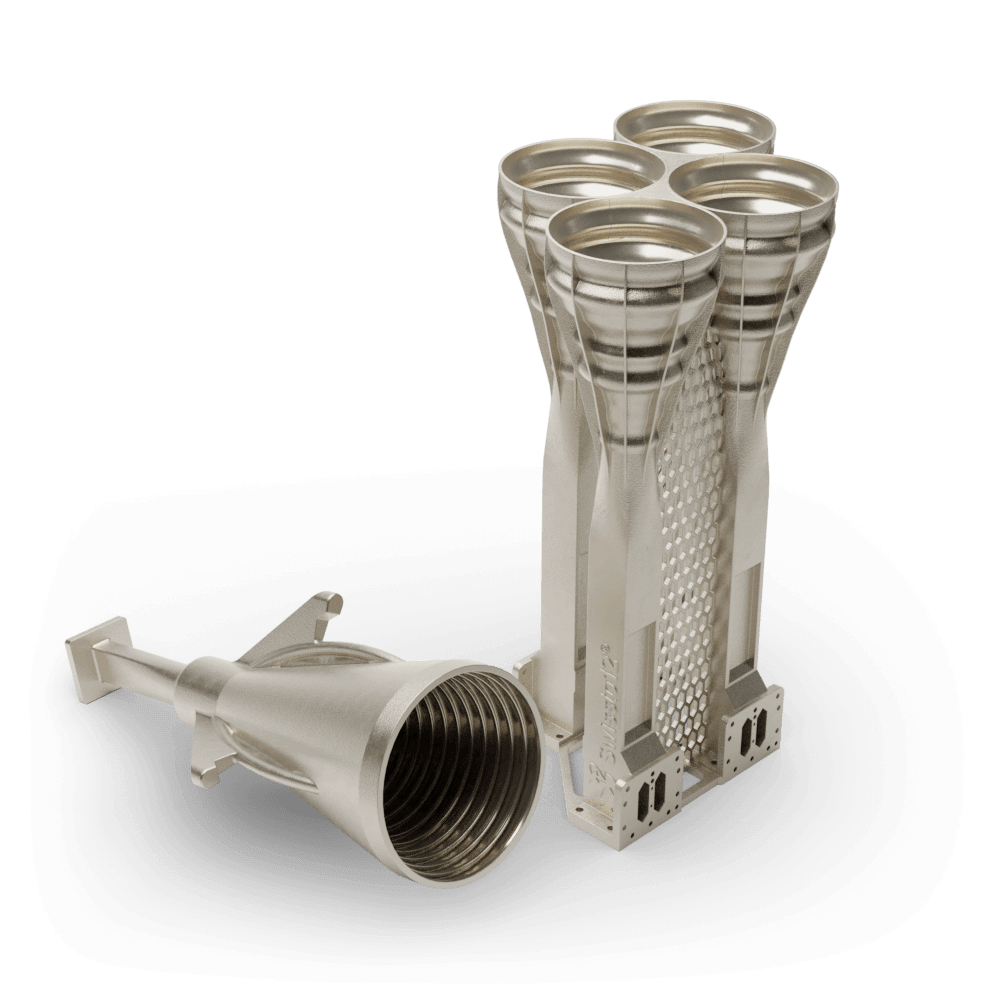The niche electronics 3D printing segment is steadily growing as parties in military, space and aerospace continue pursuing methods for improving satellite and communications technology. When it comes to 3D printing radio frequency (RF) components, there is just one partnership focused exclusively on that task: SWISSto12 and its US partner, CAES (Cobham Advanced Electronic Solutions. The duo, which established an alliance focused exclusively on the additive manufacturing of RF parts in 2021, has been chosen by Lockheed Martin’s Space division to 3D print phased array antennas for future satellite missions.
Previously the electronics unit of British defense company Cobham, CAES supplies electronics to the U.S. Department of Defense. At the helm as chief technology officer is David Young, former vice president of advanced program development at Lockheed Martin’s space division. SWISSto12 is a Swiss Federal Institute of Technology spinout dedicated to 3D printing complex satellite parts. In fact, it already has hundreds of products already incorporated into in-orbit satellites, including the Eutelsat Konnect satellite from Thales Alenia Space, as well as satellites from the U.K.’s Inmarsat and Israel’s NSLComm.
Together, the teams are able to take the AM expertise of SWISSto12 and combine it with the design, production, and testing knowledge of CAES. The result is the ability to 3D print RF systems that meet the size, weight, and performance requirements of their clients. With the latest contract, the partners will develop phased array antennas at SWISSto12’s headquarters in Switzerland before they are 3D printed by CAES’s new AM lab in Exeter, New Hampshire.
“We look forward to this developing collaboration with Lockheed Martin, a global technology leader in aerospace, space and security. There is tremendous opportunity offered by our 3D printed antenna technology to help upcoming satellite missions optimize their performance and throughput while enhancing their coverage flexibility,” said Dr. Emile de Rijk, Founder and CEO of SWISSto12. “We are grateful for the trust Lockheed Martin places in SWISSto12 and CAES to embark onto this development which has long-term strategic value to both our companies.”
“For decades, CAES has developed and manufactured a variety of antennas, RF subsystems and microelectronics for Lockheed Martin’s space missions,” said David Young, Chief Technology Officer of CAES. “Together with our partner SWISSto12, we are thrilled to collaborate once again to usher in a new wave of pioneering advanced electronic solutions based on additive manufacturing technologies.”
“SWISSto12 and CAES provide a strong mix of innovative technical solutions and skilled talent,” said Kyle Griffin, vice president of Lockheed Martin Space’s Advanced Program Development group. “We look forward to strengthening this relationship as we build solutions for increasingly complex challenges in space.”
Just as rocket engines have proven to be ideal systems for 3D printing, so too are satellite parts. And it’s for many of the same reasons. These items are produced in limited quantities for high-value applications, thus justifying the expense of specialty manufacturing technologies, with AM being much less expensive than traditional methods. Moreover, complex, new designs can be achieved with 3D printing that might otherwise be impossible. All of this is particularly valuable when it comes to space applications, where light weight and high performance are of the utmost importance.
We’re not only seeing new electronics designs beginning to take off in space, however. We know that Google, Meta, Samsung, and, likely, Apple have electronics 3D printers at least for R&D purposes. So, we may see new antenna, and even microchip, geometries integrated into devices here on Earth. These will, in turn, communicate with satellites featuring 3D printed parts in space. Of course, the defense sector will see this realized first before it’s translated to civilian use. If I had to guess, I’d say they’re probably already realizing it in some ways today.
Subscribe to Our Email Newsletter
Stay up-to-date on all the latest news from the 3D printing industry and receive information and offers from third party vendors.
You May Also Like
Precision at the Microscale: UK Researchers Advance Medical Devices with BMF’s 3D Printing Tech
University of Nottingham researchers are using Boston Micro Fabrication‘s (BMF) 3D printing technology to develop medical devices that improve compatibility with human tissue. Funded by a UK grant, this project...
3D Printing Webinar and Event Roundup: April 21, 2024
It’s another busy week of webinars and events, starting with Hannover Messe in Germany and continuing with Metalcasting Congress, Chinaplas, TechBlick’s Innovation Festival, and more. Stratasys continues its advanced training...
3D Printing Webinar and Event Roundup: March 17, 2024
It’s another busy week of webinars and events, including SALMED 2024 and AM Forum in Berlin. Stratasys continues its in-person training and is offering two webinars, ASTM is holding a...
3D Printed Micro Antenna is 15% Smaller and 6X Lighter
Horizon Microtechnologies has achieved success in creating a high-frequency D-Band horn antenna through micro 3D printing. However, this achievement did not rely solely on 3D printing; it involved a combination...































